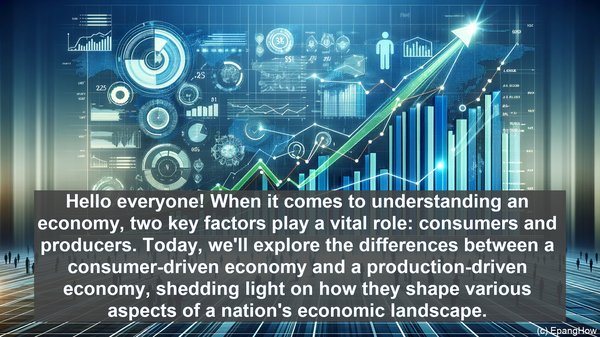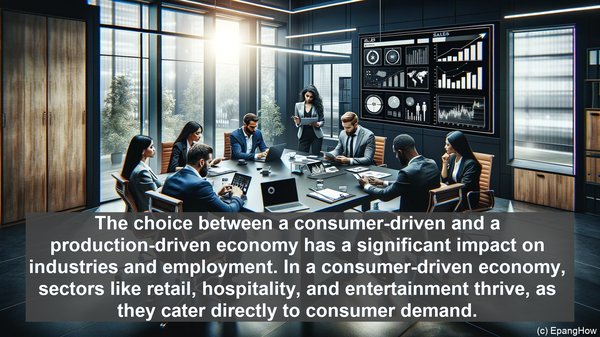Introduction: The Two Pillars of Economic Systems
Hello everyone! When it comes to understanding an economy, two key factors play a vital role: consumers and producers. Today, we’ll explore the differences between a consumer-driven economy and a production-driven economy, shedding light on how they shape various aspects of a nation’s economic landscape.
Consumer-Driven Economy: The Power of Demand
A consumer-driven economy, as the name suggests, revolves around the consumers. Here, the demand for goods and services is the driving force. When consumers have a strong purchasing power and are willing to spend, it creates a ripple effect. Industries flourish, employment opportunities increase, and economic growth is stimulated. Think of it as a cycle where consumer demand fuels production, which in turn generates income and further boosts demand.

Production-Driven Economy: The Engine of Supply
On the other hand, a production-driven economy places emphasis on the supply side. Here, the focus is on producing goods and services efficiently and at a competitive cost. The idea is to ensure a steady supply of products, both for domestic consumption and export. Industries are the backbone of this economy, and policies often aim to incentivize production, innovation, and export. While consumer demand is still crucial, it’s the production capacity and efficiency that take center stage.
Impacts on Industries and Employment
The choice between a consumer-driven and a production-driven economy has a significant impact on industries and employment. In a consumer-driven economy, sectors like retail, hospitality, and entertainment thrive, as they cater directly to consumer demand. On the other hand, a production-driven economy prioritizes manufacturing, agriculture, and technology sectors, as they are the key contributors to the production capacity. Consequently, the employment landscape also varies, with different skill sets in demand for each type of economy.
Economic Growth: A Balancing Act
Both types of economies have their strengths and challenges when it comes to economic growth. A consumer-driven economy can experience rapid growth during periods of high consumer spending, but it may also be more susceptible to economic downturns if consumer confidence wavers. In contrast, a production-driven economy may have a more stable growth trajectory, but it needs to constantly innovate and adapt to remain competitive in the global market. Striking the right balance between the two is often the key to sustained economic growth.

